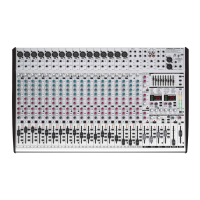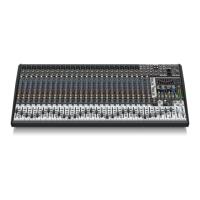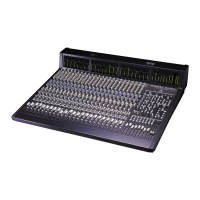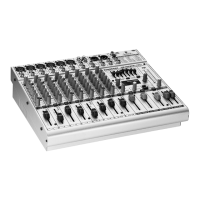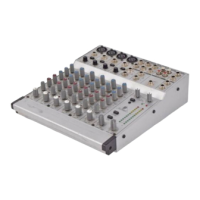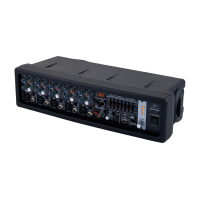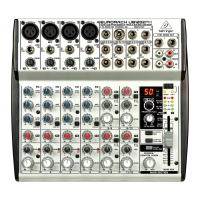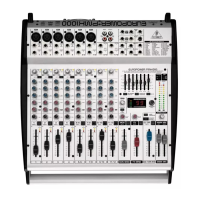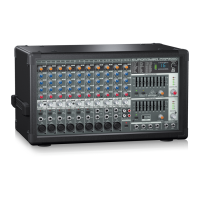
Do you have a question about the Behringer Eurodesk SL3242FX-Pro and is the answer not in the manual?
| Channels | 32 |
|---|---|
| Line Inputs | 32 |
| Other Inputs | 4 Stereo |
| Aux Sends | 6 |
| Effects | Yes |
| Digital Effects | Yes |
| Phantom Power | Yes |
| USB Interface | No |
| Type | Analog |
| Microphone Preamps | 24 |
| Other Outputs | 2x 1/4" TRS |
| EQ Bands | 3-band (LF, MF, HF) |
| Effects Processor | Built-in |
Covers reading instructions, avoiding water, proper cleaning, ventilation, electrical safety, grounding, and servicing.
Details using specified accessories, securing equipment, and proper servicing.
Advises on checking for damage upon shipment and proper handling.
Covers adequate air supply, fuse replacement, grounding, and avoiding high volume levels.
Guides on product registration and how to use the manual for detailed information.
Describes the XLR mic input with phantom power and 1/4" TRS line input.
Explains the TRIM control for gain and the 3-band equalizer section.
Describes stereo line inputs, TRIM control, and the stereo equalizer with dual mid bands.
Explains how aux and FX buses work with stereo channels, mixing to mono first.
Explains subgroup faders, solo switches, routing to main mix, and subgroup outputs.
Describes stereo channels with dedicated aux sends, suitable for monitoring.
Details the mono out fader, low-pass filter, and its connector for subwoofer applications.
Explains the main fader, XLR/TRS outputs, main inserts, phantom power, and the level meter.
Describes the talkback function for communicating with musicians via AUX SEND outputs.
Details volume control for headphones/monitors and signal source selection.
Explains RCA connections for CD/tape and the standby mode function for muting channels.
Covers master controls for aux send levels and their output connectors.
Explains the 9-band stereo EQ, its usage for room acoustics, and the FBQ feedback detection system.
Details the effects processor, preset selection, FX SEND/RETURN, and routing options.
Covers power switch, phantom power activation, fuse holder, and serial number.
Lists and describes parallel effects (add-to-mix) and insert effects (full signal processing).
Illustrates a studio wiring example for 4-track recording using subgroups and tape returns.
Shows a typical live setup wiring for drums, bass, guitar, and vocals.
Explains unbalanced TS, balanced TRS, headphone, and insert send/return connectors.
Details stereo RCA connectors for tape and balanced/unbalanced XLR connectors.
Lists and describes parallel effects like reverb, chorus, delay, and their applications.
Lists and describes insert effects like compressor, gate, expander, and their applications.
Details technical specifications for mono/stereo inputs, outputs, impedance, and frequency response.
Provides specifications for the DSP, power supply, dimensions, and weight of the unit.
